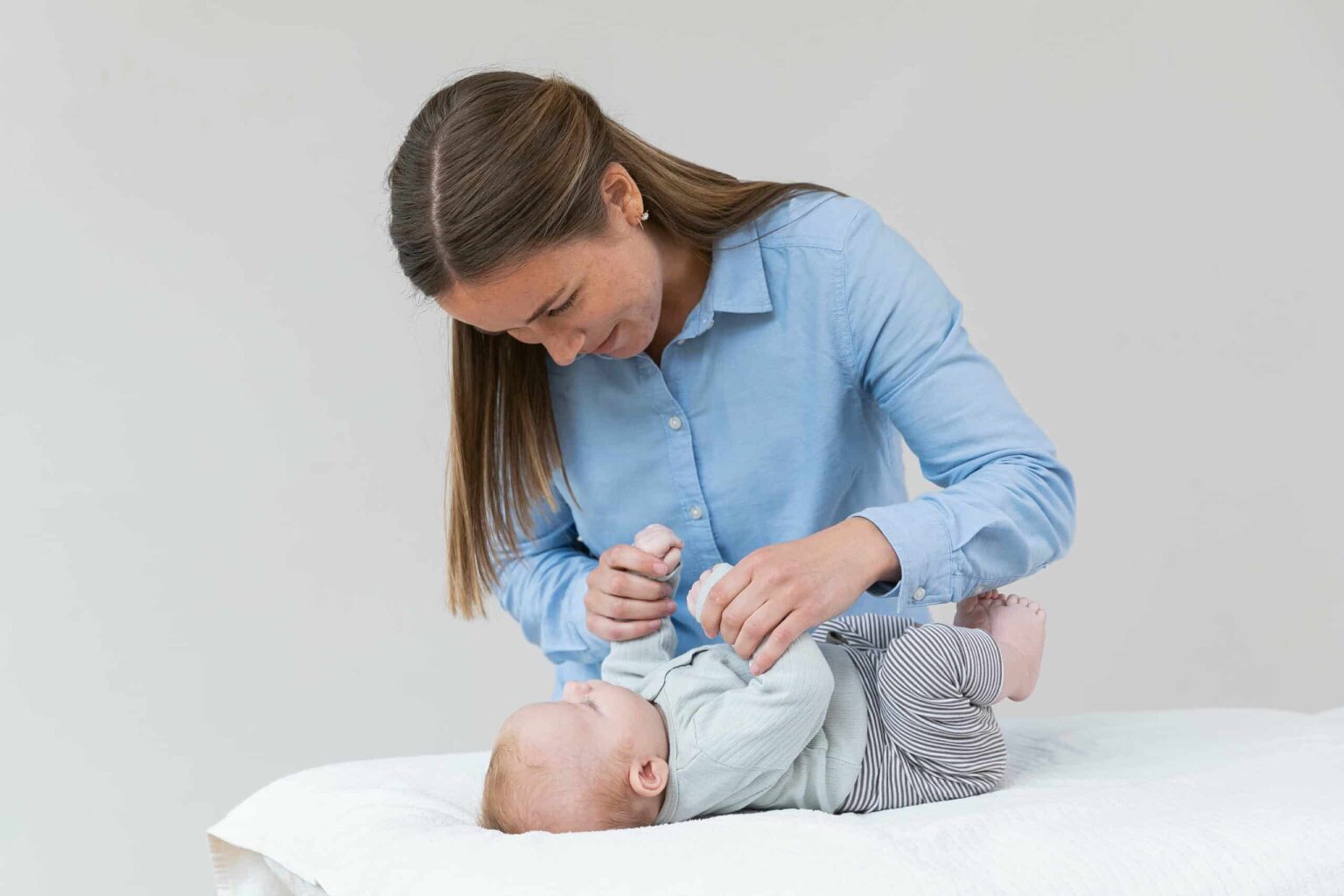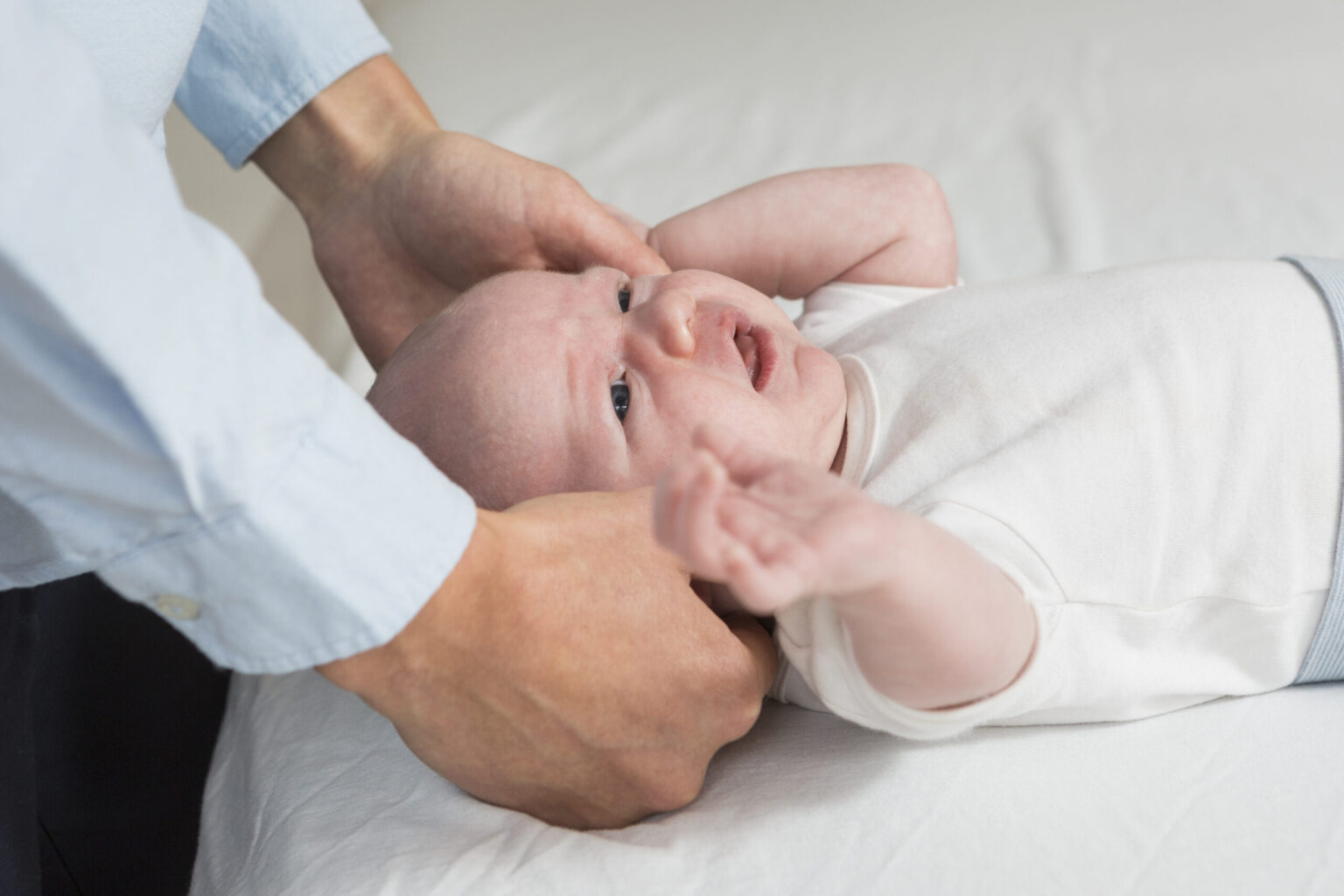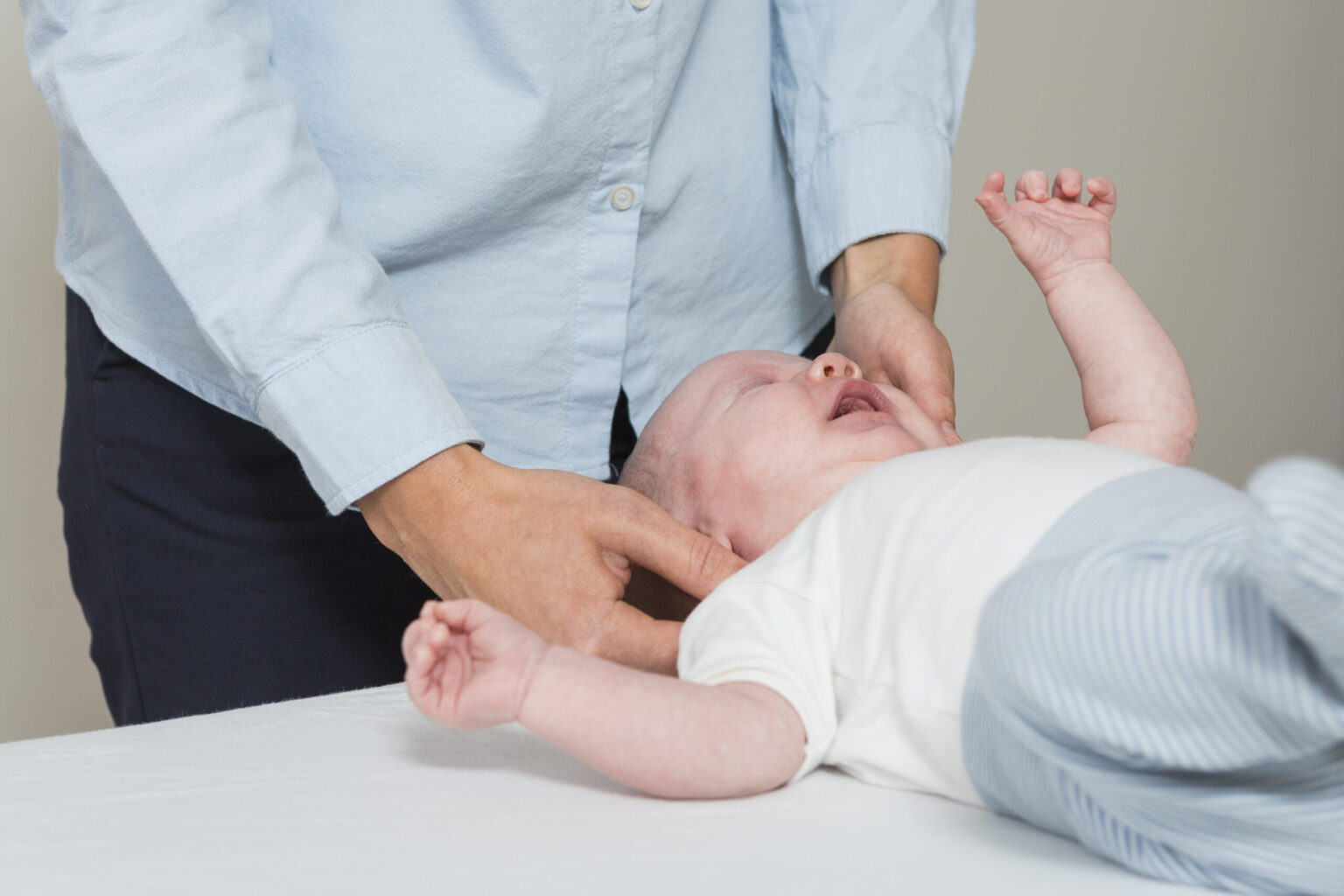We treat
Babies
Learn more about baby treatment
Baby treatment
Parents are increasingly bringing their infants for treatment, and out of all babies born in 2017, almost a third received manual treatment in their first year of life.
Jump to section [Vis]
Baby crying – Colic
The first thing new parents encounter is a crying baby. Crying is the baby’s way of telling mom and dad that something is wrong, something is missing or something is uncomfortable, so it is completely normal. Other symptoms can be sleep problems, digestive problems, hard stomach (constipation), constant baby crying, bowel problems, etc. but these baby problems can be treated. On average, a 2-week-old baby cries about 80-90 minutes a day, which peaks within the first 2 months. However, crying can be pathological and abnormal.
Colic can be described as unexplained crying 3 hours a day, 3 days a week for at least 3 weeks. Colic occurs in about 1 in 5 babies, or about 30% of all newborn babies.
A more detailed definition is:
- Gradually increasing length and loudness of baby’s cry
- Cry several times a day
- Baby kicks and flails with arms uninhibitedly during crying spells
No way to calm the baby down (food, sleep, comfort and a new diaper don’t help) It can be difficult to figure out if your baby’s crying is normal. Below is an overview of normal crying at different ages in babies and children, i.e. when the baby is trying to get the parents’ attention.
- 0 – 2 months: baby cries loudly with eyes closed
- 2 > months: the child howls/cry with open eyes, often during expiration (when the child breathes out during respiration). The child/baby may also make a crying-like sound during expiration.

Causes of baby crying
- Infections – here a fever will most often be present
- Pathology – such as hidden reflux or other structural problems
- Dysfunctions in the gastrointestinal system
- Lactose intolerance – the gastrointestinal system has an allergy or intolerance to lactose
- Poor breastfeeding technique or the child has tongue tie problems
- Reflux/vomiting – see further down
- Cranial dysfunctions (flat/crooked skull), e.g. in problematic births (too long/rapid births, if the baby is taken with a suction cup, caesarean section, etc.)
- Neck pain/neck stiffness, which can also occur as a result of problematic births
- Back pain/locking in the back, which can occur due to how the baby was positioned in the womb and problematic births
- Stomach problems (digestive problems, hard stools, thin stools), e.g. liver dysfunctions, problems with the intestines, intestinal flora and sphincters in the intestinal system.
These baby problems can be treated at Osteonordic
Otitis media (ear problems)
This type of baby nuisance is common in children up to 6 years of age, but occurs most often in babies. The reason for otitis media is often due to the ear canal not being developed in babies and children, which often contributes to bacteria not being able to be “flushed” out of the ear with the mucous membranes before inflammation occurs. Otitis media can be divided into two stages:
Otitis serosa (fluid in the ear)
This type creates ventilation problems in the ear and is often caused by dysfunction of the ear canal or increased fluid production in the middle ear. Fluid in the ear is often the precursor to otitis media.
Symptoms of fluid in the ear
- Most often no symptoms
- Hearing loss
- Green-yellowish eardrum
Acute otitis media (middle ear infection that is still closed)
At this stage, there is no ventilation of the ear canal, so bacteria and inflammation are trapped in the ear.
Symptoms of closed otitis media
- Ear pain and pressure in the ear
- Fever and lethargy/weakness
- Red eardrum
- Pain in the bones around the ear (if the inflammation has spread)

Acute otitis media (open middle ear infection)
In this stage, there is ventilation of the ear canal again, so that bacteria, pus and inflammation can seep out of the ear and ear canal.
Symptoms of open otitis media
- The pain is reduced and the pressure in the ear is less.
- Less fever
Ear problems in your baby can be treated at Osteonordic
Often sick baby or sick child – Reduced immune system / immune defense
At the beginning of many babies’ and children’s lives, they are exposed to a huge amount of bacteria and viruses, especially in and around the age of 1-3, when children come into contact with other children in institutions, daycare or similar. Their defense system, the immune system, has not yet come into contact with viruses and bacteria, which is why the immune system has not yet formed antigens (protection) against various diseases. Therefore, it is natural that babies and children occasionally get a fever, have a runny nose or cough.
Unfortunately, many parents know that their child or baby is affected by illnesses one or more times a month, which is not normal.
Several different reasons can be found.
Symptoms of a weakened immune system/immune system
- Coughing and breathing problems
- Often illness
- Stomach cramps
- Poor digestion and bowel movements
- Constipation
- Distended stomach

Causes and treatment of frequently sick baby or child – Reduced immune system / immune defense
Babies’ immune systems are already formed in the mother’s womb, through the mother’s hormonal, immune and blood systems. Therefore, it is important how the mother eats, lives and exercises. An often overlooked factor is if the mother has been stressed, mentally affected or has not been physically active during pregnancy.
Babies’ immune systems are also strengthened during and after birth, when they are exposed to bacteria from the mother’s mucous membranes in the vagina. After birth, the baby’s hormonal system is strengthened when it lies skin to skin, safely with its mother.
The baby’s hormonal and immune systems are also strengthened when the mother and baby relationship develops, when the mother smiles, talks and breastfeeds the baby.
- Cranial dysfunctions (flat/crooked skull), e.g. in problematic births (too long/rapid births, if the baby is taken with a suction cup, caesarean section, etc.)
- Neck pain/neck stiffness, which can also occur as a result of problematic births
- Back pain/locking in the back, which can occur due to how the baby was positioned in the womb and problematic births
- Stomach problems (digestive problems, hard stomach, constipation, thin stomach), e.g. liver dysfunctions, problems with intestines, intestinal flora and sphincters in the intestinal system
- Respiratory problems, e.g. chronic bronchitis, pneumonia, asthma, etc.
- Diet, many children and babies have sensitive intestinal systems, which is why gluten, lactose, sugar and starch can often be too hard on the stomach
Frequently sick children/babies and problems with your baby’s immune system can be treated at Osteonordic
Osteonordic and baby treatment
We are experts in finding causes and treating pain, discomfort and problems in babies. We look at all systems in the body, musculoskeletal system (muscles, joints etc.), nervous system, blood system, hormonal system, organ system and craniosacral system to diagnose the right cause of impaired immune system, colic baby, reflux / vomiting baby, otitis media etc.

Baby reflux
When babies have been breastfed, it often happens that a small amount of breast milk comes back up. Vomiting can be divided into 2 types:
Common baby reflux – Baby regurgitates
Breast milk comes back within 30 minutes. This is because the baby has drunk too much, so that the space in the stomach cannot accommodate the intake. It can also be because the baby sleeps for a long time in a horizontal position and that the stomach in babies is not yet positioned as it is in adults.
Baby regurgitates due to poor sucking technique
Problems with breastfeeding can often be caused by anatomical or physiological problems in the baby. A difficult birth or a birth where the baby has to be helped out of the birth canal (with forceps or forceps) can often cause a crooked skull or locking in the neck, which can cause problems with the glossopharyngeal nerve. This nerve controls the muscles in the palate and jaw that are involved in the sucking reflex.
Hidden baby reflux
This type of problem can be difficult to distinguish from normal baby regurgitation. Here are the following symptoms that can differentiate it from normal regurgitation:
- Crying/colic symptoms
- Crying stops when baby eats
- Sleep problems/waking up crying
- Common asthmatic bronchitis/chronic asthmatic bronchitis
Causes of hidden reflux
- Problems with the esophagus/sphincter from the esophagus to the stomach.
- Cranial dysfunctions, e.g. in problematic births (excessively long/rapid births, if the baby is taken with a suction cup, caesarean section, etc.)
- Neck pain/neck stiffness, which can also occur as a result of problematic births







